Displaying items by tag: Nonnative Species
#Flora&Fauna - Inland Fisheries Ireland (IFI) and the National Biodiversity Data Centre (NBDC) have launched a second round of public consultation on its risk assessments on certain non-native species – including a number of marine and waterways species, following the first round in mid-May.
The following risk assessments of various plant species, many of which grow on or close to Ireland's inland waterways, are now available for comment via www.nonnativespecies.ie until Wednesday 6 August 2014:
•Allium triquetrum (Three-cornered Leek)
•Corbicula fluminea (Asian Clam)
•Egeria densa (Large-flowered Waterweed)
•Hydrocotyle ranunculoides (Floating Pennywort)
•Impatiens glandulifera (Himalayan Balsam)
•Ludwigia spp. (Water Primroses)
•Lysichiton americanus (American Skunk-cabbage)
•Myriophyllum aquaticum (Parrot’s Feather)
The following risk assessments will be available for comment shortly:
•Carpobrotus edulis (Hottentot-fig)
•Elodea canadensis (Canadian Pondweed)
•Hippophae rhamnoides (Sea-buckthorn)
•Juncus planifolius (Broad-leaved Rush)
•Hyacinthoides hispanica (including H. non-scripta x H. hispanica) (Spanish Bluebell)
•Persicaria perfoliata (Mile-a-minute Weed)
•Rubus spectabilis (Salmonberry)
#Flora&Fauna - Inland Fisheries Ireland (IFI) and the National Biodiversity Data Centre (NBDC) have been tasked by the National Parks and Wildlife Service (NPWS) to undertake risk assessments on certain non-native species - including a number of marine and waterways species - listed in the Third Schedule to the European Communities (Birds and Natural Habitats) Regulations 2011 (SI 477/2011).
The risk assessments provide evidence-based knowledge that will be used by the Department of Arts, Heritage and the Gaeltacht in the implementation of Regulations 49, 50 and 74.
These regulations are concerned with the prohibition on the introduction, dispersal, trading and keeping of certain non-native species and associated licensing requirements that may apply.
To date, each risk assessment completed (refer to list below) has undergone an internal review and an external expert review and is now available for stakeholder and public consultation on the project website.
As such, IFI and the NBDC invite any interested parties to make submissions on these completed risk assessments, which are available for comment for a two-week period after publication.
Further to this, three public meetings will take place to inform interested stakeholders and the general public about the Regulations and associated licencing requirements as follows:
- 20/21 May 2014: IFI Head Office, 3044 Lake Drive, Citywest Business Campus, Dublin 24 from 7.30pm to 9.30pm
- 22 May 2014: Athlone Springs Hotel, Monksland, Athlone, Co Westmeath from 7.30pm to 9pm
Project staff will also be available to meet in person or receive calls from stakeholders between 11:00 and 17:00 on each of the above days by appointment only to receive consultation on matters pertaining to the risk assessments or licensing requirements. Please call 087 051 3116 during business hours to make such an appointment.
Additional information on the Non-native Species Risk Assessment Project can be found on the project website. Guidance information on the licensing requirements can be viewed HERE.
The following risk assessments are available for comment until 24 May 2014:
Aponogeton distachyos (Cape Pondweed)
Astacus astacus (Noble Crayfish)
Astacus leptodactylus (Turkish Crayfish)
Azolla filiculoides (Water Fern)
Bufo bufo (Common Toad)
Capreolus capreolus (Roe Deer)
Crassula helmsii (Australian Swamp Stonecrop)
Crepidula fornicata (Slipper Limpet)
Cyprinus carpio (Carp)
Elodea nuttallii (Nuttall’s Pondweed)
Gunnera manicata (Brazilian Giant-rhubarb)
Gunnera tinctoria (Giant-rhubarb)
Hydropotes inermis (Chinese Water Deer)
Lagarosiphon major (Curly-leaved Waterweed)
Leuciscus cephalus (Chub)
Lithobates catesbeianu (American Bullfrog)
Muntiacus reevesi (Muntjac Deer)
Myriophyllum aquaticum (Parrots Feather)
Nymphoides peltata (Fringed Water-lily)
Orconectes limosus (Spiny-cheek Crayfish)
Pacifastacus leniusculus (Signal Crayfish)
Pistia stratiotes (Water Lettuce)
Procambarus clarkii (Red Swamp Crayfish)
Procambarus spp. (Marbled Crayfish)
Rhododendron ponticum (including R. x superponticum)(Rhododendron)
Strix aluco (Tawny Owl)
Sus scrofa (Wild Boar)
Tamias sibiricus (Siberian Chipmunk)
The following risk assessments are not yet available for comment:
Allium triquetrum (Three-cornered Leek)
Carpobrotus edulis (Hottentot-fig)
Corbicula fluminea (Asian River Clam)
Egeria densa (Large-flowered Waterweed)
Elodea canadensis (Canadian Pondweed)
Hippophae rhamnoides (Sea-buckthorn)
Hyacinthoides hispanica (including H. non-scripta x H. hispanica) (Spanish Bluebell)
Hydrocotyle ranunculoides (Floating Pennywort)
Impatiens glandulifera (Himalayan Balsam)
Juncus planifolius (Broad-leaved Rush)
Ludwigia (L. grandiflora, L. peploides and L. hexapetala) (Water-primrose)
Lysichiton americanus (American Skunk-cabbage)
Persicaria perfoliata (Mile-a-minute Weed)
Rubus spectabilis (Salmonberry)






























































